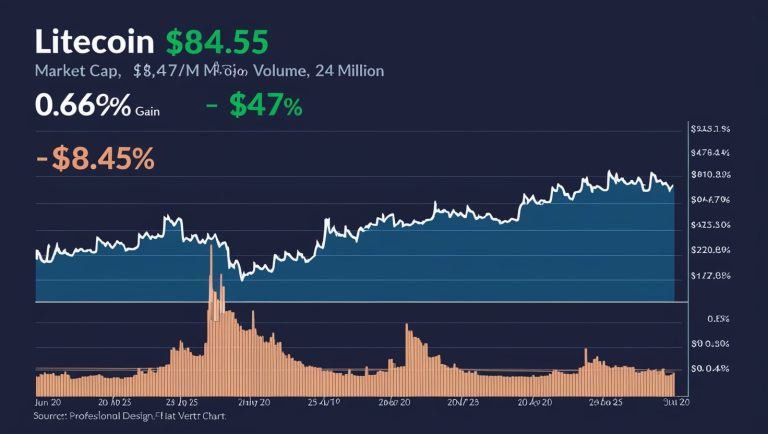Toncoin (TON) is at no. 18, with a price pegged at 2.95 and a market cap of 7.29 billion as of 20/06/2025. Its daily increment is 0.88 percent, which indicates increasing investor strength.
Price Trends and Market Performances
The price of Toncoin at the moment is 2.95 USD, but it has shown a stable 0.88 percent growth during the last 24 hours. It is one of the strongest players with a market cap of 7.29 billion and a gain of 0.89 %. This performance highlights the attractiveness of Toncoin in a competitive crypto market due to its unique technology.
Volume and Liquidity
Toncoin trading volume in 24 hours touched the important mark of 106.55 million. Such a peak shows that there is strong trading activity, as the volume-to-market-cap percentage stands at 1.45. This liquidity is representative of an expansion in the use of Toncoin and the capacity to draw both retail and institutional investors.
Value and Supply Dynamics
Toncoin has a total supply of 5.13 billion, and 2.46 billion is circulating. The value of this business is estimated to be 15.18 billion in terms of its fully diluted value (FDV), which indicates that it can grow by a significant margin. Contrary to cryptocurrencies with a limited supply, Toncoin can be modified freely, as it has an unlimited max supply, but this means people will question the stability of its value over the long term.
Technology underpinnings and scale-ups
Telegram originally developed it to power The Open Network (TON), a layer-1 blockchain meant to be fast and scalable. Its sharding technology allows high throughput in transactions comparable to conventional payment methods. According to the most recent X discussions, this efficiency brings Toncoin to the forefront of blockchain innovation.
Activity and Holder Base of Network
Toncoin has seen immense holder growth of 151.11 K. X says there has been a 300 percent growth in network activity since early 2025, which has been spurred by the development of decentralized apps (dApps). This rich ecosystem of wallets and even gaming platforms supports Toncoin to increase its usefulness and attractiveness to the market.
Social Commentary and Social Buzz
There is an insurgency of bullish sentiments in X, with analysts estimating the incorporation of Toncoin in Telegram, with a potential base of 900 million users, as a developmental driver. Reports of its ability to come above the resistance of the $3.50 level in the near future and whale transactions, informing a total of $10.2 billion in deals in the last few days, aim to strengthen the feeling of a rally.
Technical Analysis and Price Analysis
Those who analyzed X technical indicate that the price of Toncoin might go to $4.20 before July 2025, provided it lets a period of momentum over $3.00. In the short term, forecasts indicate that its price may fall by 0.72 percent by June 21; however, longer-term projections are bullish because of the power of the underlying (good fundamentals, adoption).
Decentralized Ecosystem Role
The fact that Toncoin integrates with the Telegram ecosystem makes it one of the best dApp development and microtransaction networks. It is competitive with Solana and Ethereum due to its low fees and fast transactions, with an average of 1,000 transactions per second. This makes Toncoin a favourable blockchain for potential developers and users who demand a high rate of efficiency.
Mainstream Hugeness Potential
Being based on Telegram gives Toncoin an advantage in mainstream adoption. X posts also stress that it will be used in mini-apps on Telegram, such as gaming, payments, and so on, where they have reached millions. This availability may influence mass integration, making Toncoin a connector between crypto and regular people.
Risks and Market Requirements
Regardless of its potential, Toncoin encounters risks. Its abundance is questionable because it causes inflation, which may limit the price increase. The regulatory pressure, in particular, due to Telegram’s legal struggles, might affect its future. These risks have to be considered in opposition to Toncoin’s innovative potential among investors.
Comparisons with the Competitors
Compared to Ethereum and Solana, Toncoin has a quicker transaction speed and a cheaper fee, which is also very suitable for microtransactions. In contrast to Cardano, where the main focus is research-driven development, Toncoin emphasizes user-oriented applications. This is a pragmatic solution, which makes it competitive in the layer-1 blockchain competition.
Ecosystem and Developer Action
The Toncoin developer community is already prosperous: in 2025 alone, more than 200 dApps were released, according to X data. User control has been increased to include updates such as TON Space, a self-custodial wallet. Such active development is an indication of a long-term commitment to increasing the network’s capacity and span.
International Frequency and Applications
The worldwide use of Toncoin is increasing, especially in countries that prefer Telegram. It is versatile, as it is used in peer-to-peer payments and NFT marketplaces. TON has been 100 percent uptime since it was rebranded in 2021, so it is a reliable platform with billions of dollars secured in transactions.
Economy and Investment Attractiveness
In the current state of global economic turmoil, the deflationary Burning of tokens and the Staking reward of Toncoin are factors that invite investors. X posts address that staked TON has increased by 15 percent since January 2025, which is a positive sign. It has an FDV of 15.18 billion dollars, indicating massive potential in the case of further adoption scale.
Regulatory Considerations
Considering Telegram’s experience with the SEC, the regulatory environment is problematic for Toncoin. It may be possible that dApps/token issuance will be restricted, thus slowing down growth. Nevertheless, this decision by TON decreases certain risks because it has a decentralized structure, and investors ought to consider the policies’ tendencies.
Long Term Investment Perspective
With a booming ecosystem and a market cap of $7.29 billion, Toncoin is a hot investment idea. Its Telegram and scalable blockchain will allow it to expand in the future. Yet, the fact that it is available in unlimited quantities and its regulation is somewhat risky demands that investors be optimistic, only with a note of care.
Conclusion
The three-way combination of scalability, Telegram integration, and skyrocketing adoption solidifies Toncoin as the 18th coin. With a price of $2.95, a trading volume of 106.55 million, and an FDV of 15.18 billion, this is a coin to watch in 2025. With the risks aside, the innovative aspect of Toncoin does point to a sunny future












 Bitcoin
Bitcoin  Ethereum
Ethereum  Tether
Tether  XRP
XRP  USDC
USDC  Solana
Solana  TRON
TRON  Lido Staked Ether
Lido Staked Ether  Cardano
Cardano  Avalanche
Avalanche  Toncoin
Toncoin